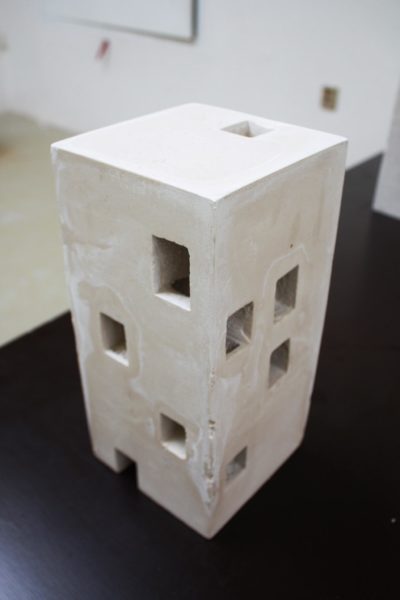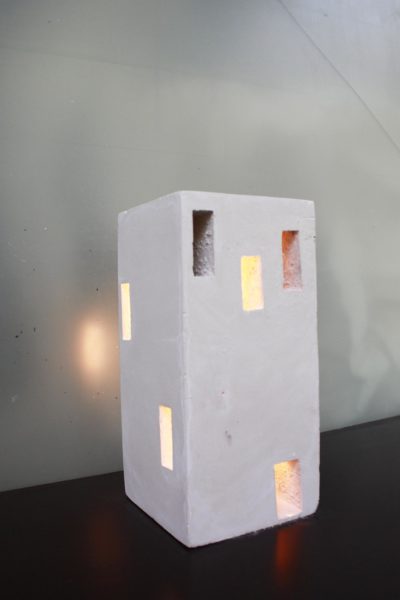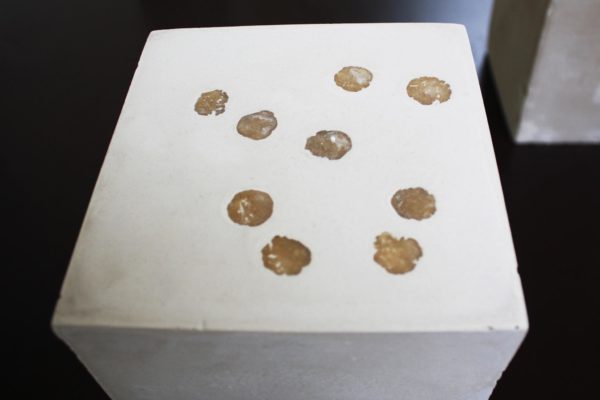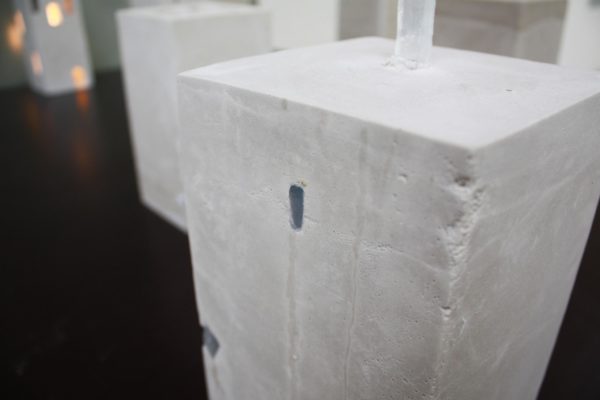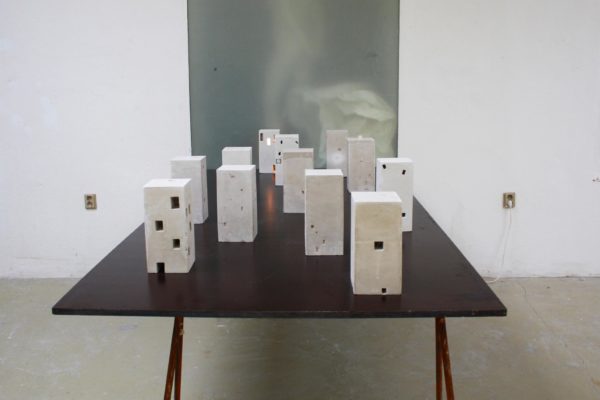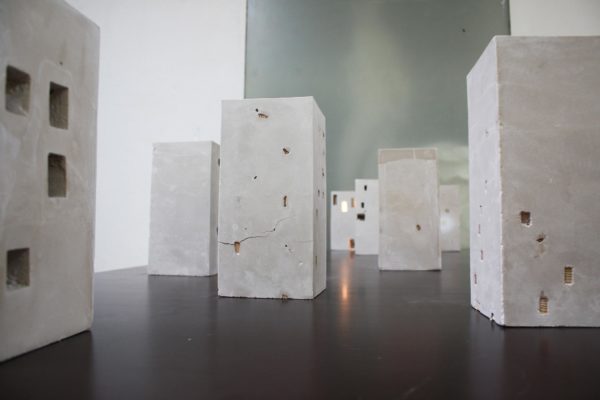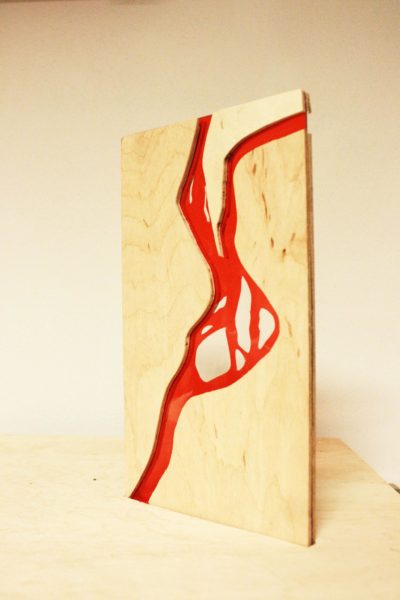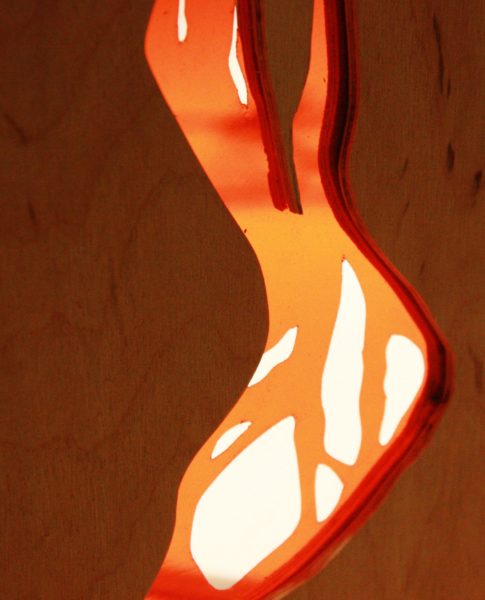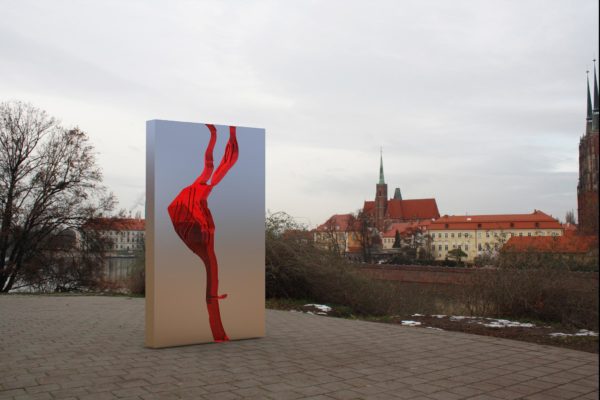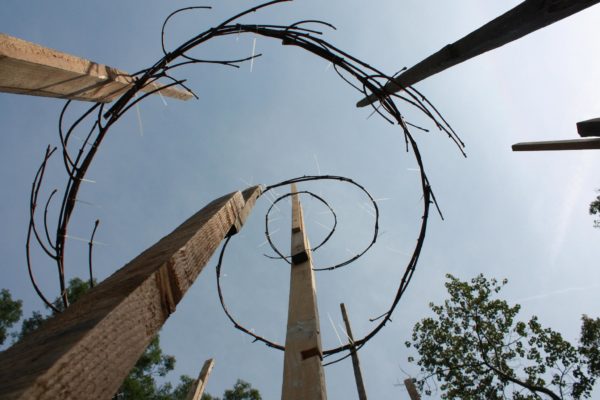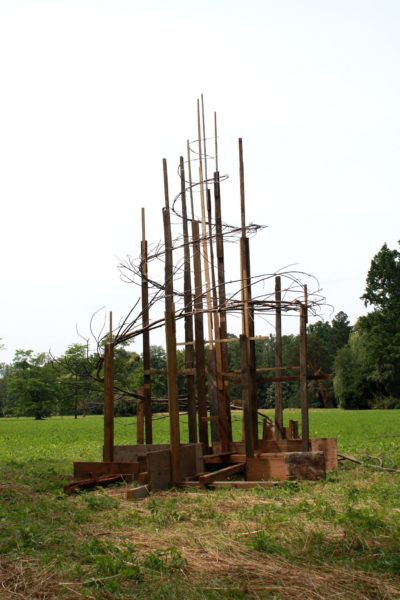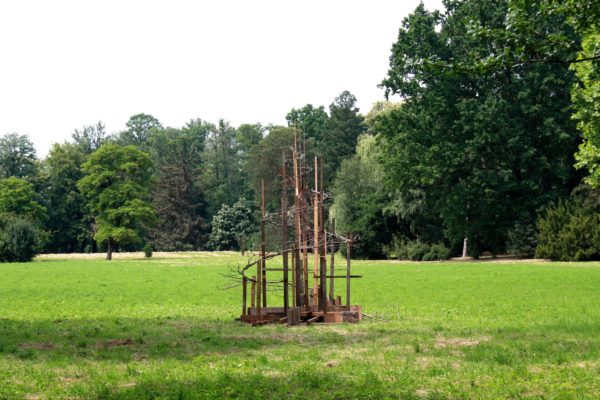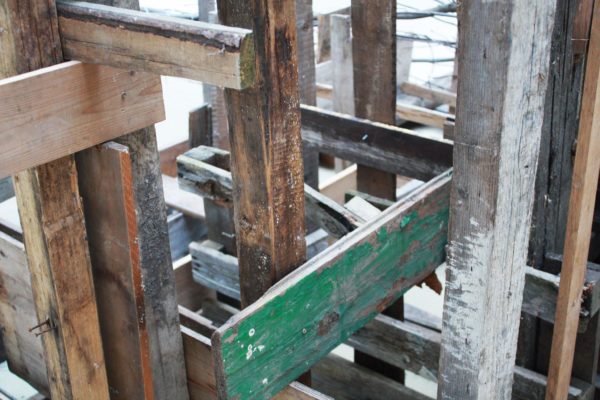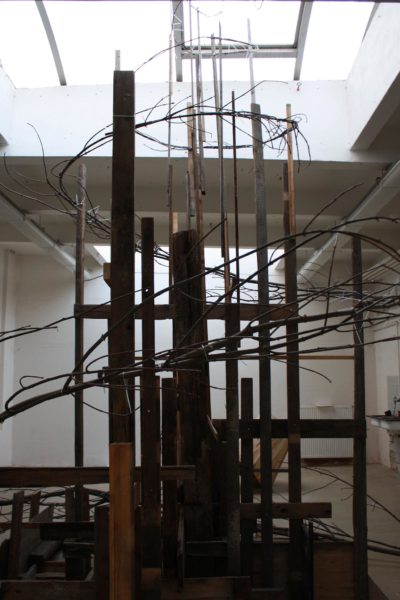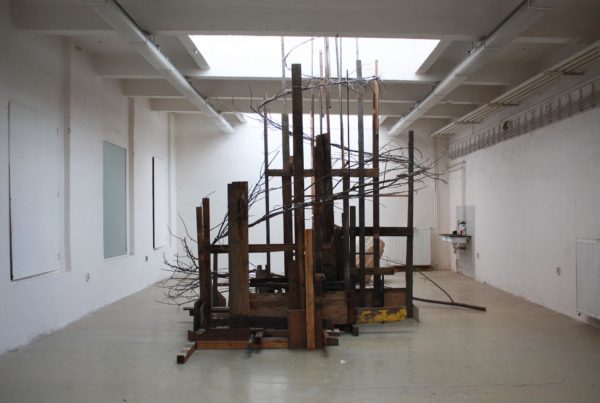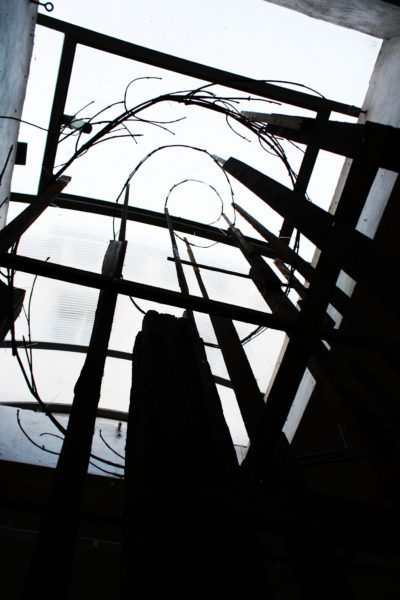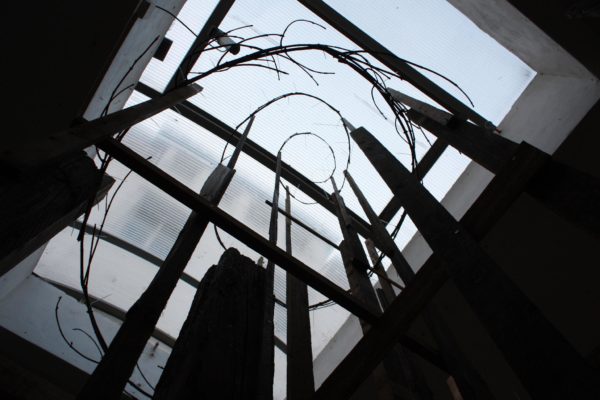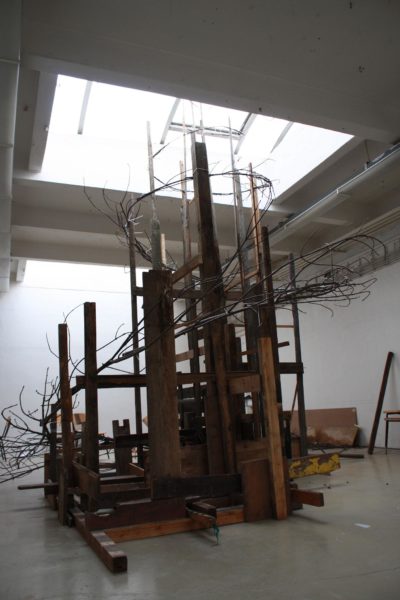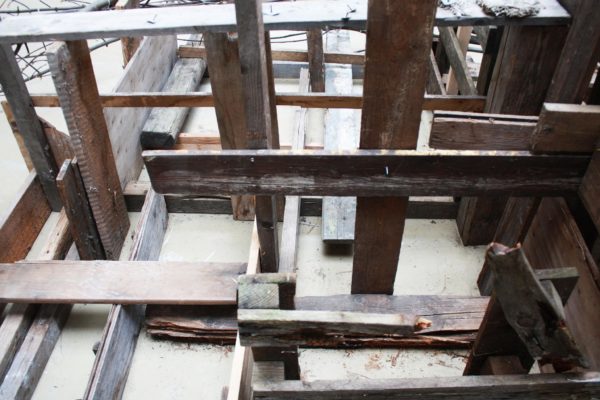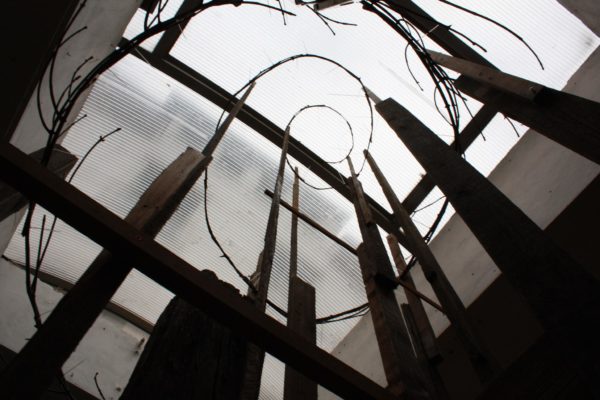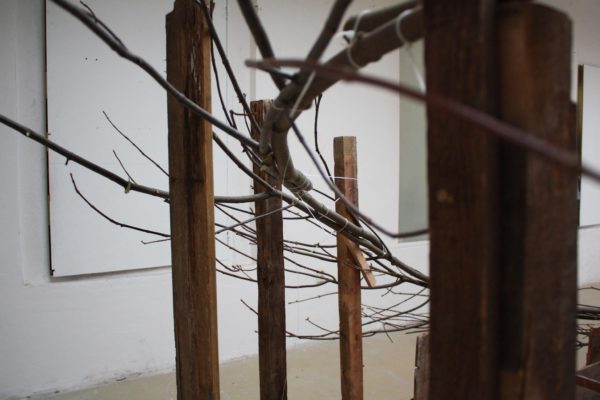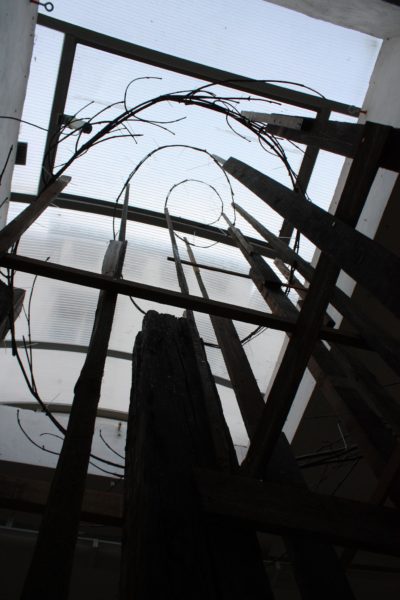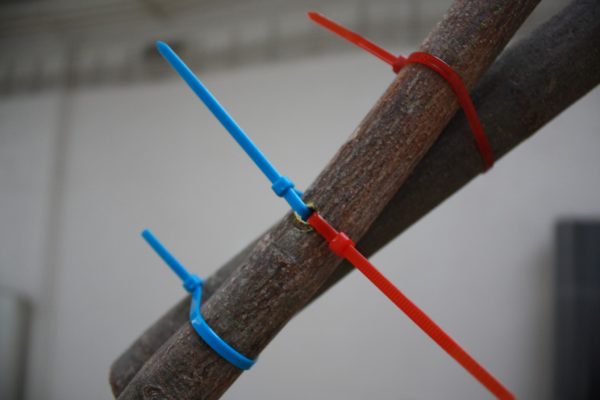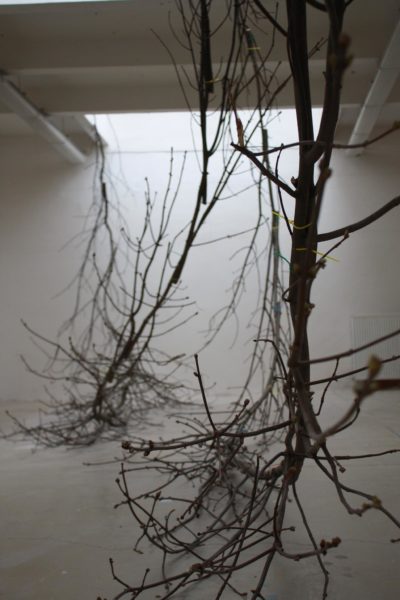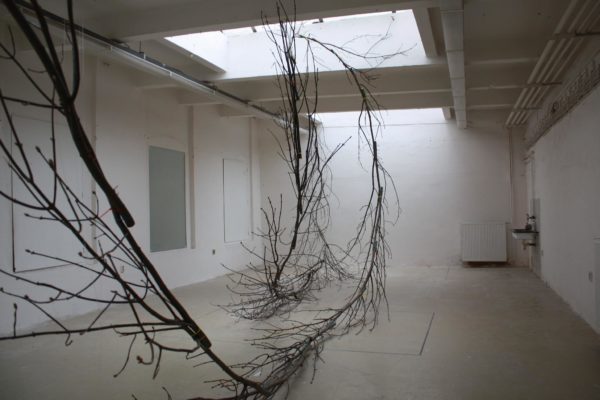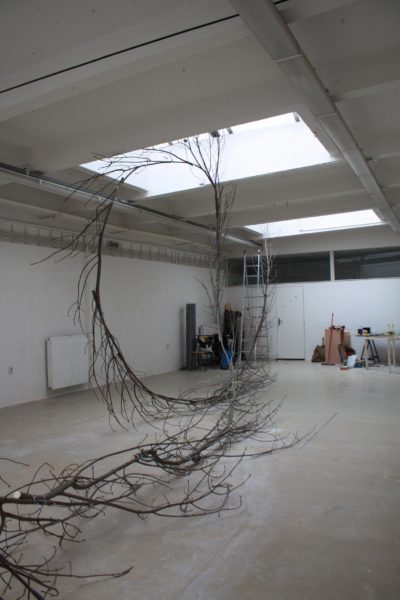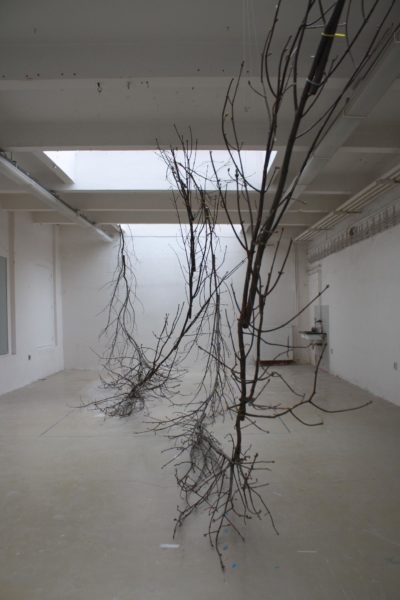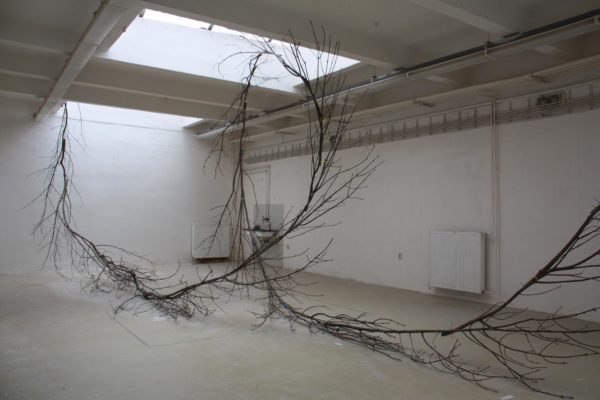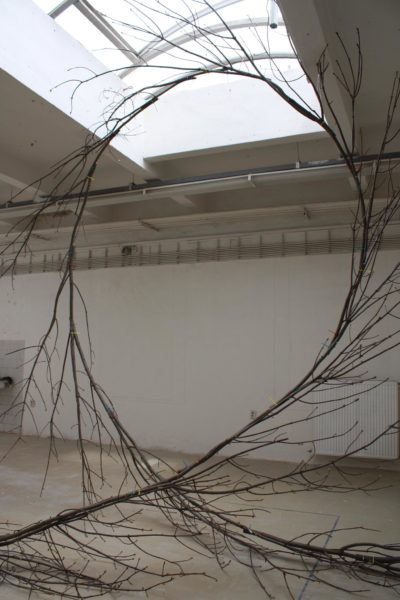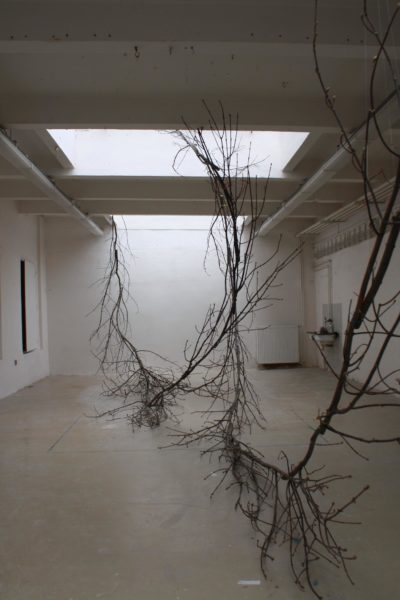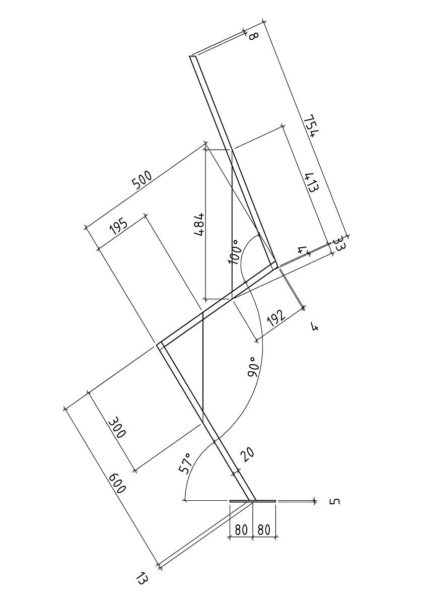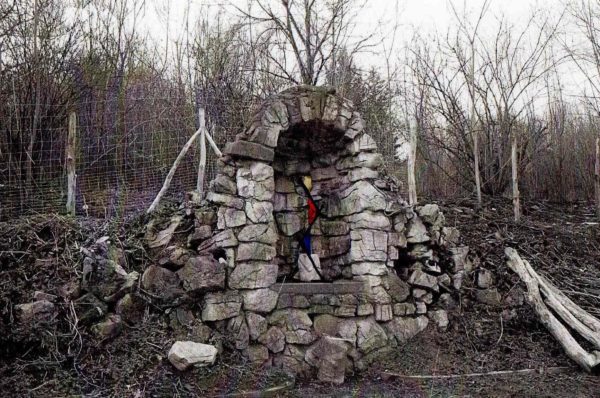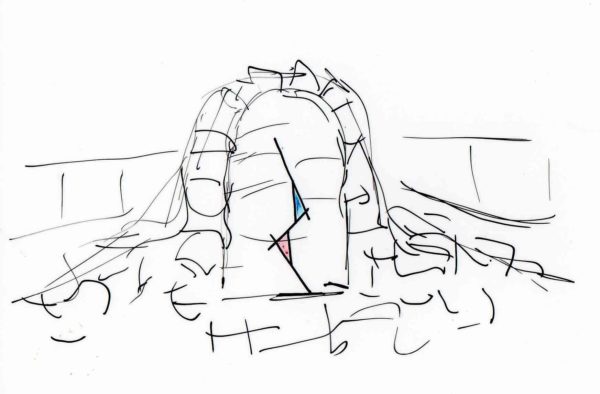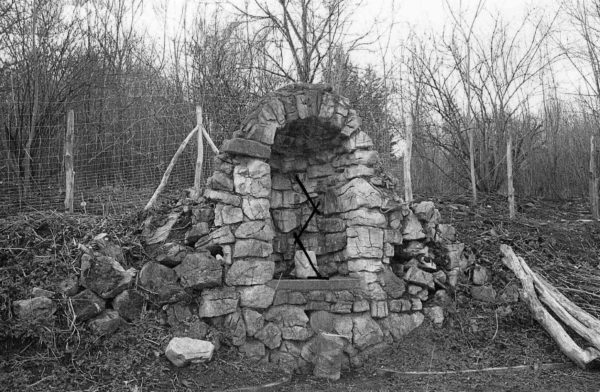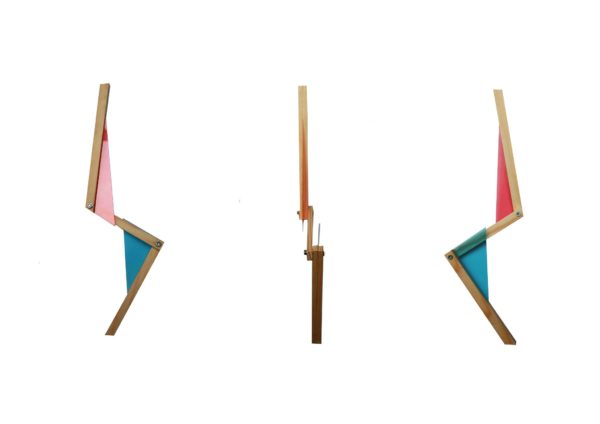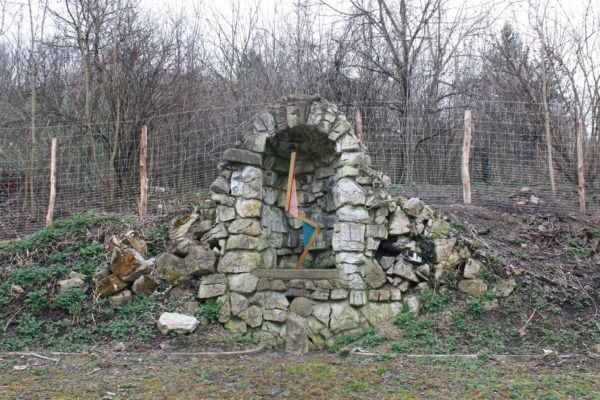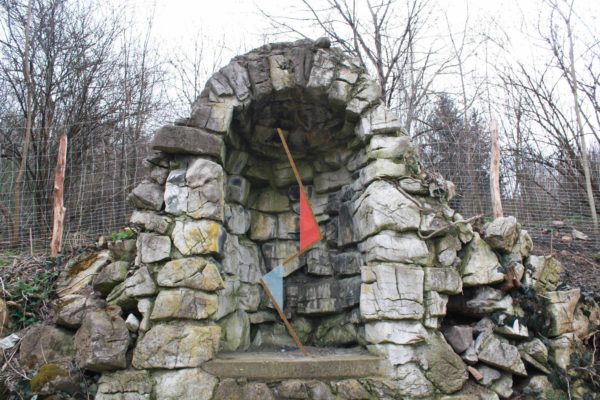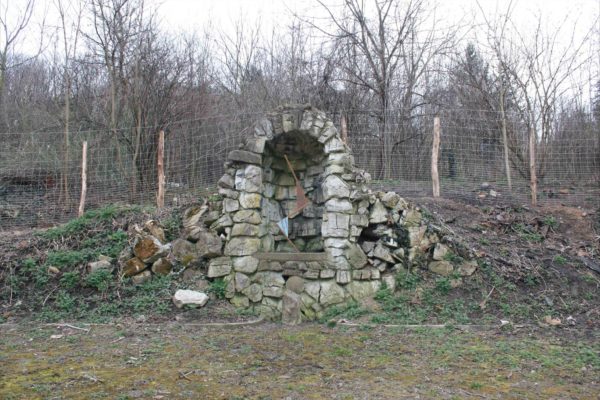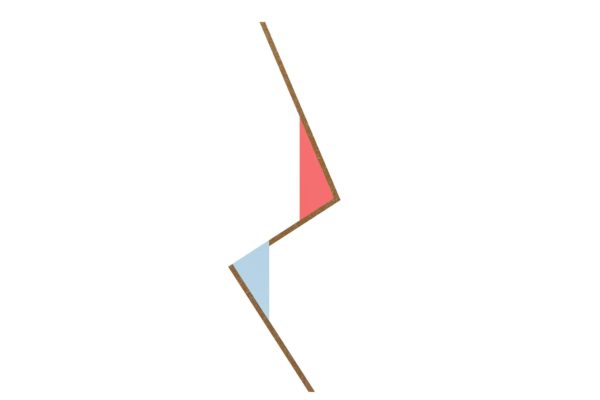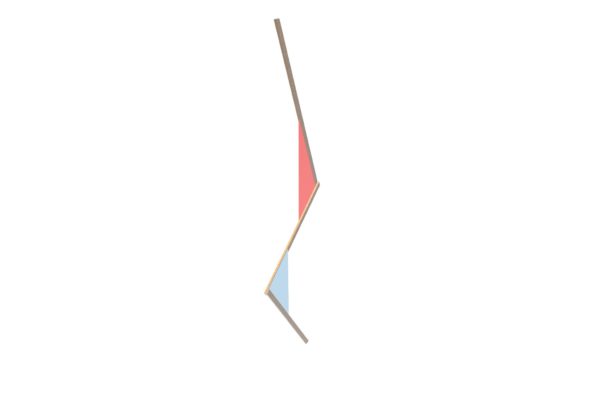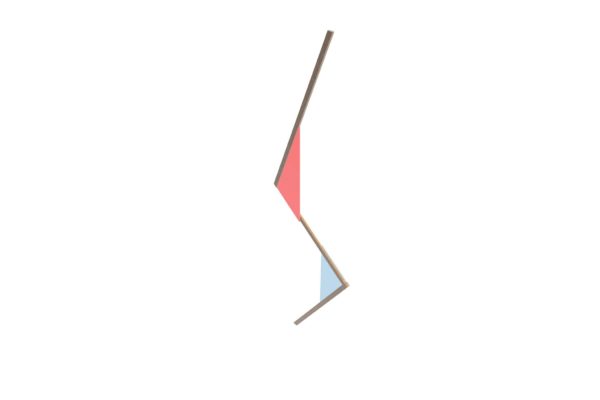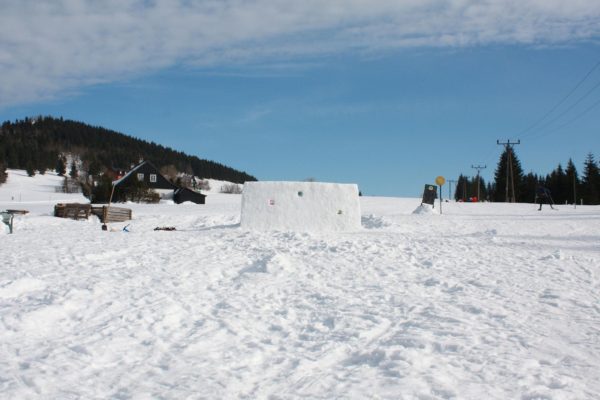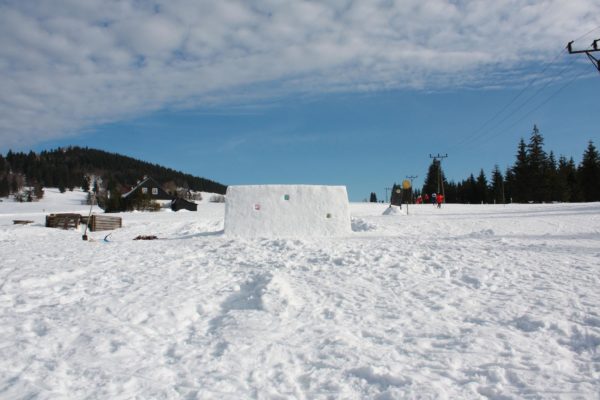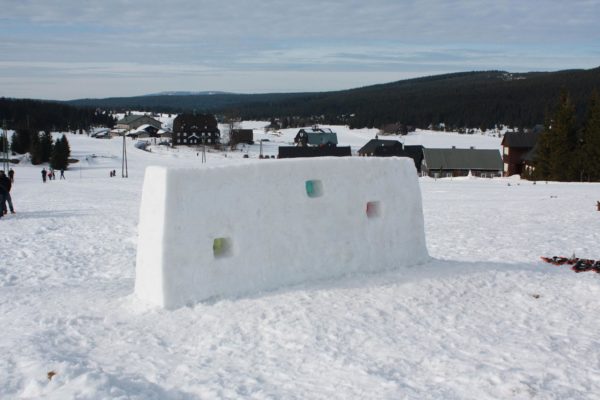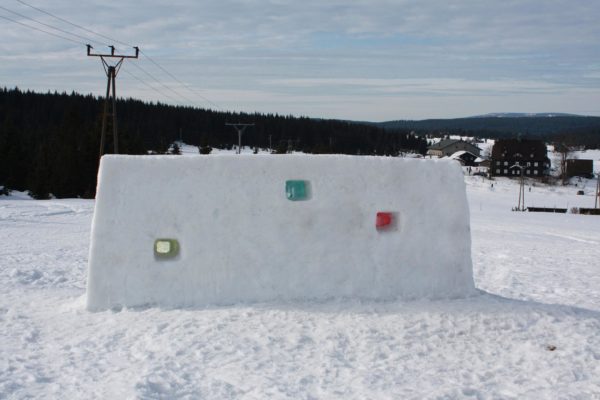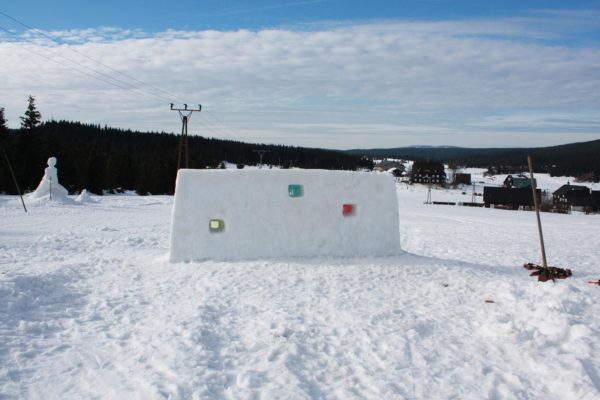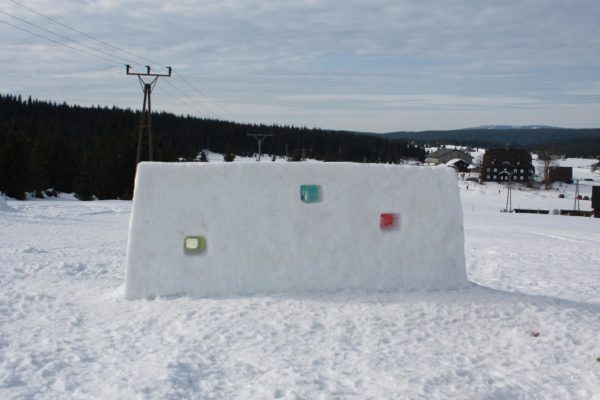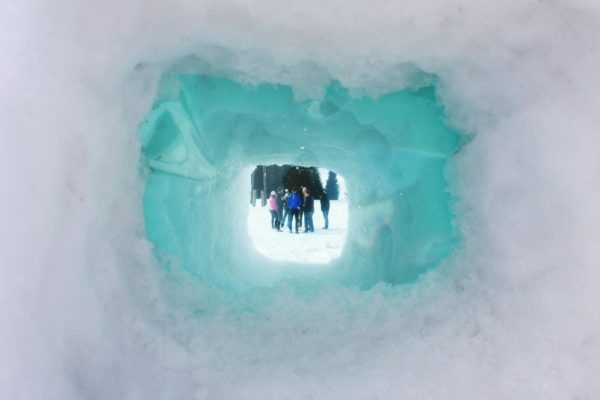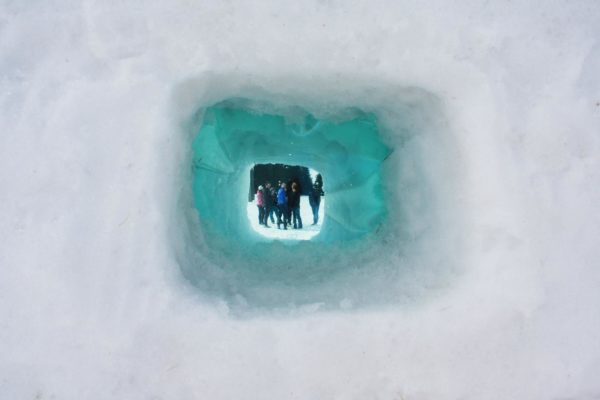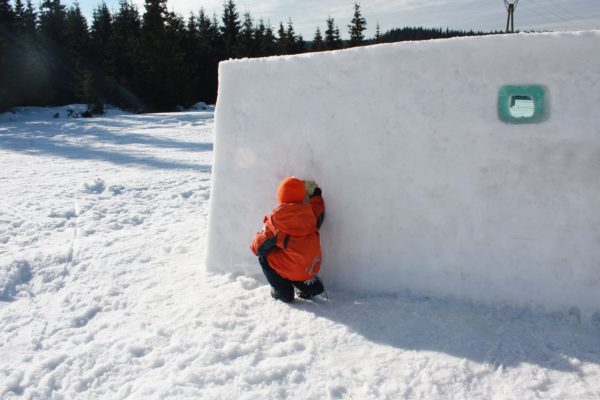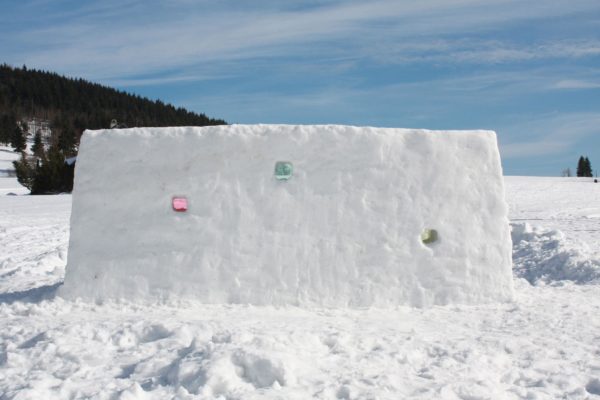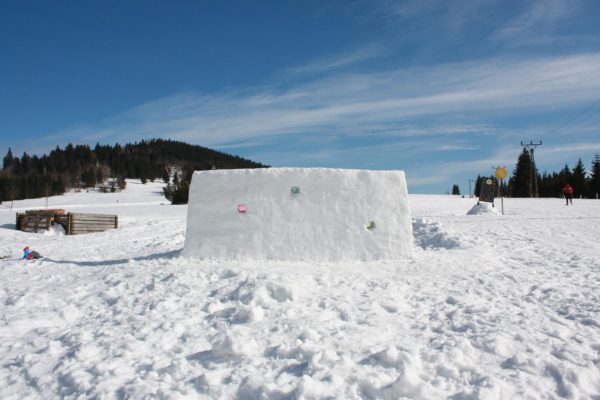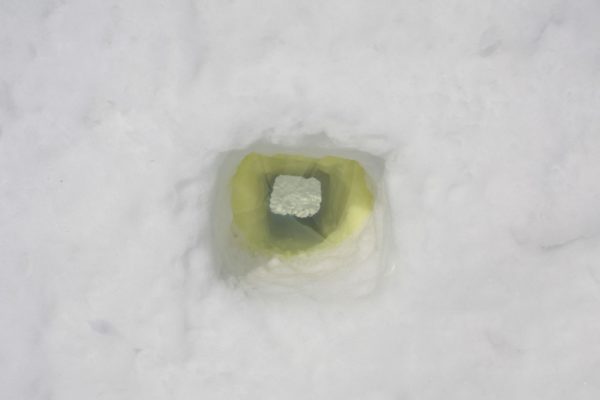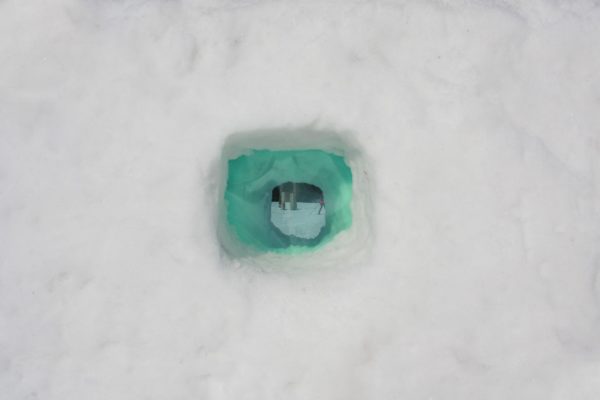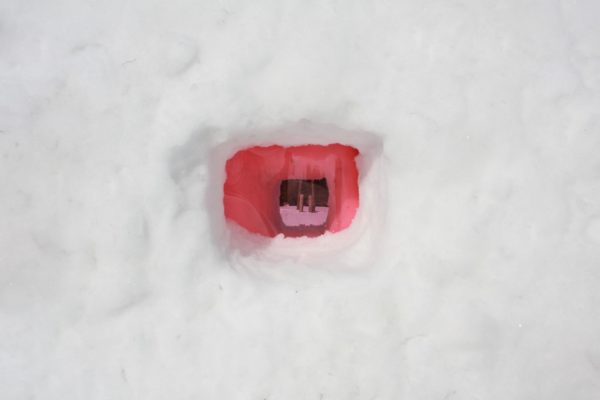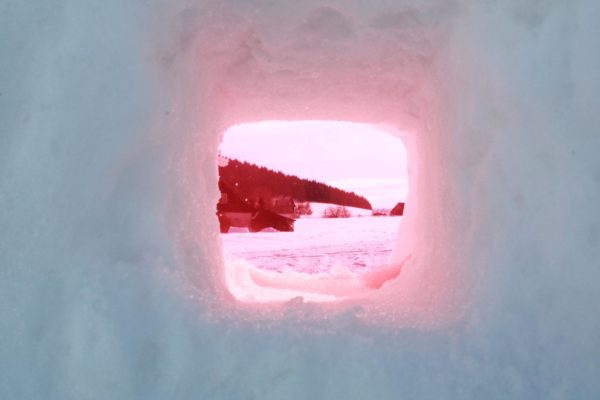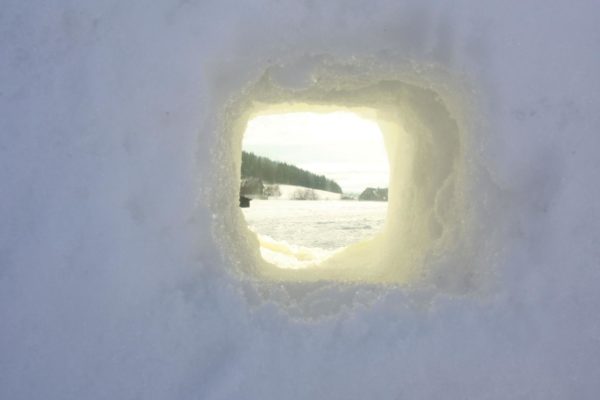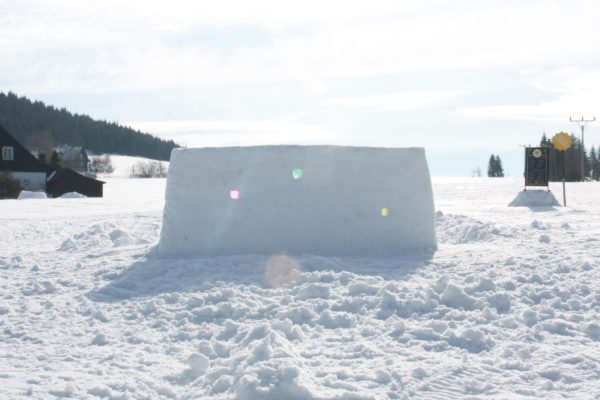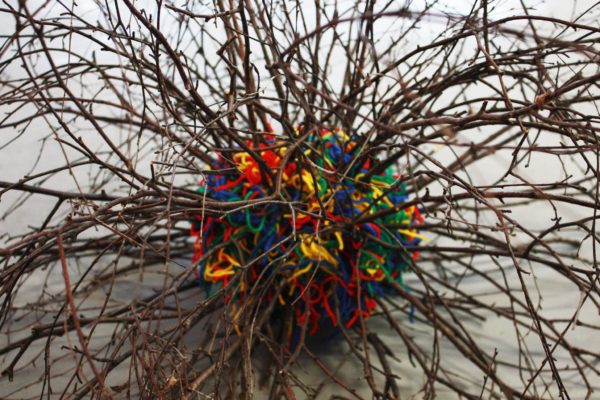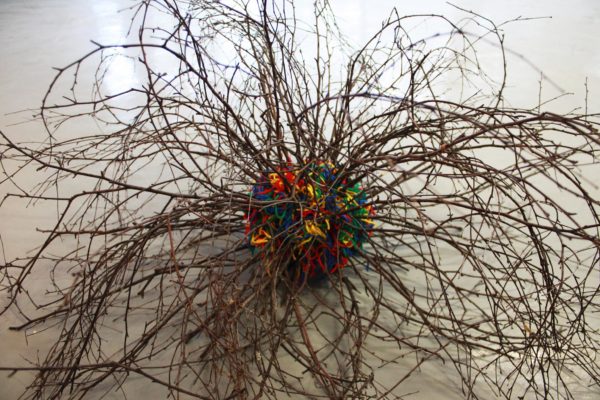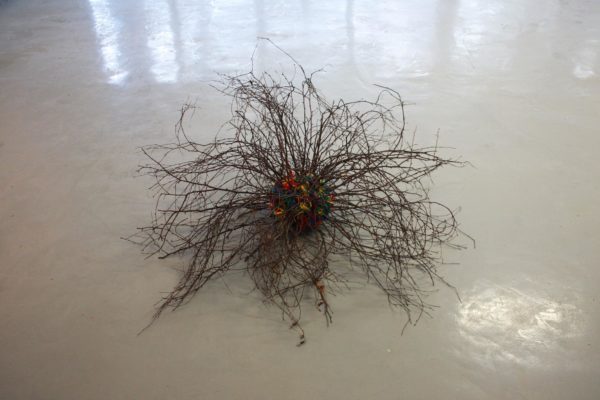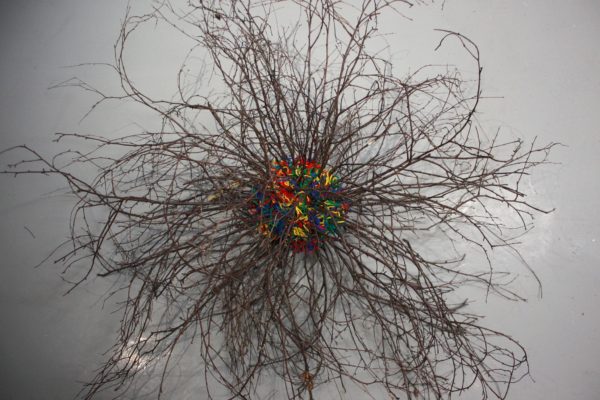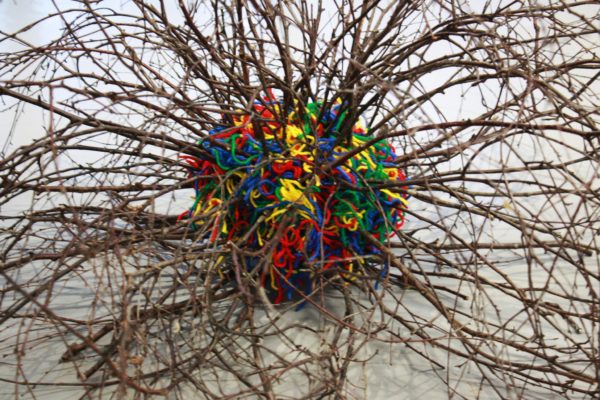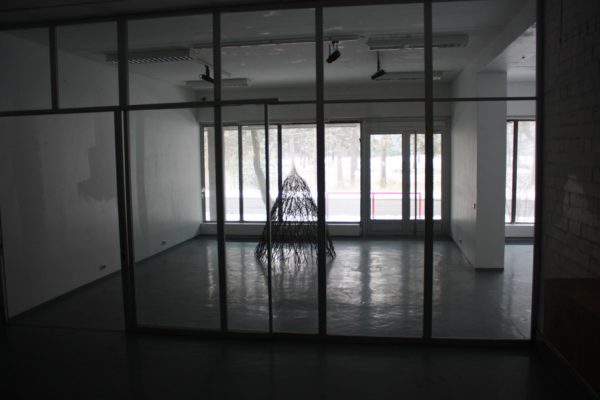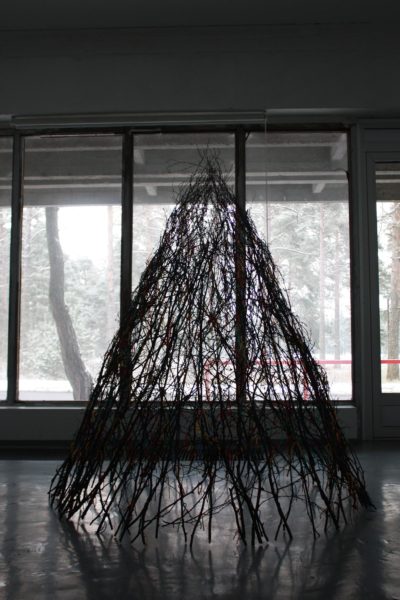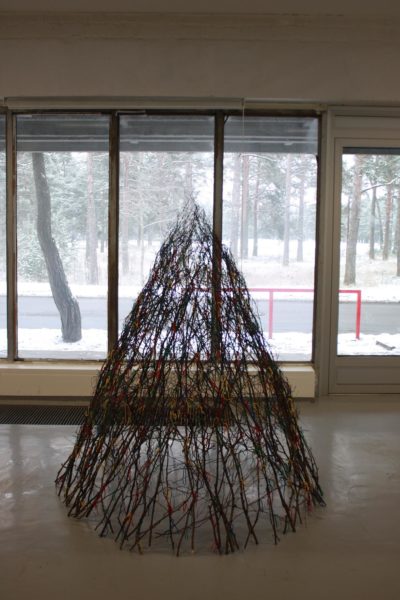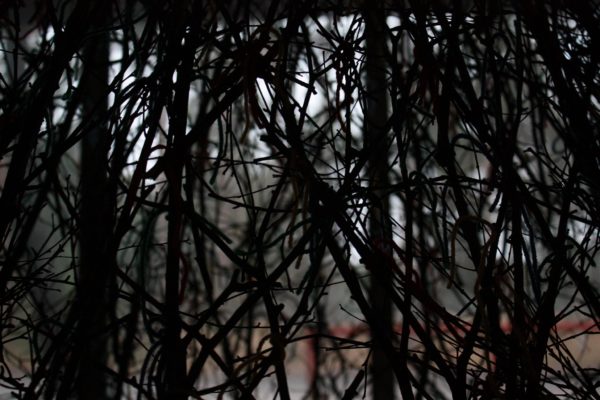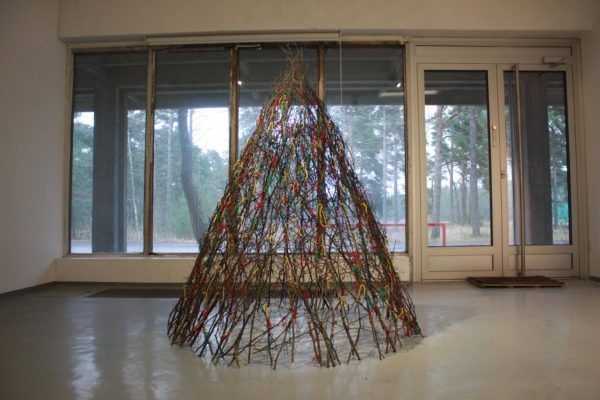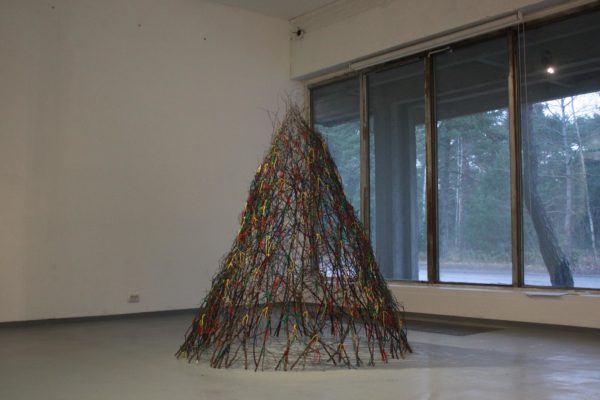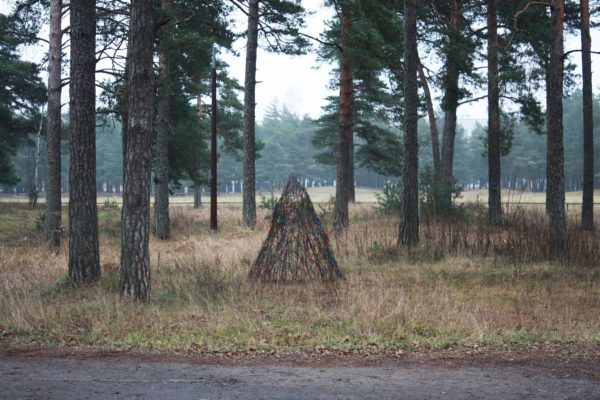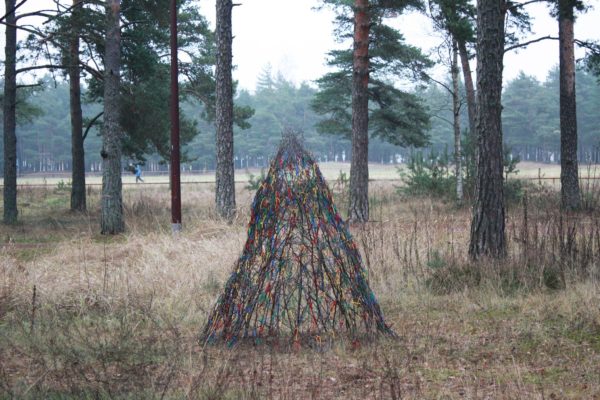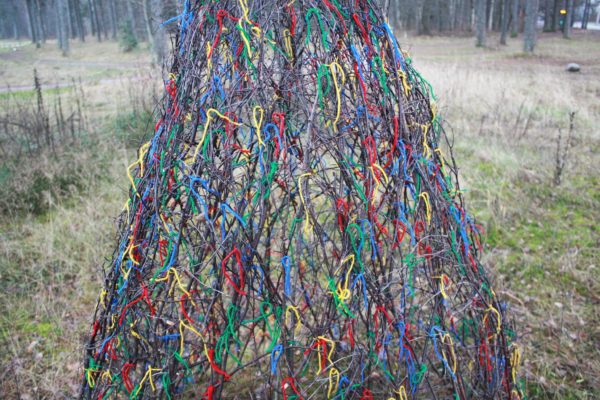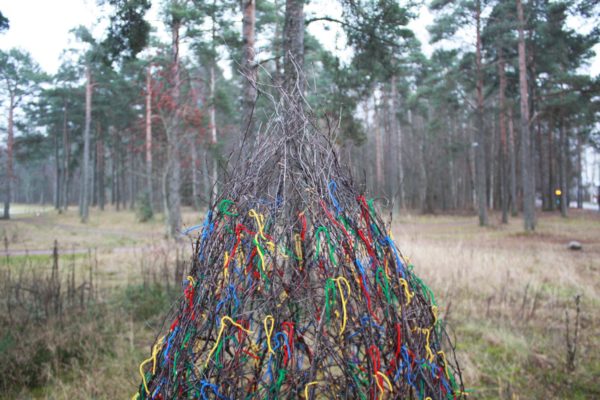Gyps, wax, wood, soapy matter, polystyrene, 2016.
In my work I deal with all aspects of the lost form. I express not only my personal mood, but literally I am creating molds for sculpting technique called lost or blind form. I am exhibiting a mold, which is predetermined to be break. I caught that moment just before uncovering the inside. The viewer is in the role of a blind man and can only guess what is inside the mold. However we can see some pieces of things from inside on the surface and they can help us to gueas what could be inside. I let the viewer to use their own fantasies and imagine what shapes is gypsum mold hiding. These forms are 1:10 models for larger sculptures. Furthermore, I am working with the idea of how to get information from inside to space around them. I used light what is inside the empty space to project the information from inside to outside. Another idea is to use heating element to get the material (wax) out. Another possibility is to use wood that absorbs water and break the mold. The last form could be with soapy matter who becomes damp.
Poland, Wroclaw, workshop Fresh design, foundation Open Mind, 1:10, 2015.
Model for sculpture in public space. It works with shape of Oder river.
Kroměříž, 4m X 3m X 3m, 2015.
Installation in Podzámecká garden for exhibition called Sculptures for Garden.
Bachelor work, 4m, 3m, 3m, 2015.
In my bachelor work I am focusing on natural and found materials. I work with branching and layering information. Common for my work is the multiplication of one element. I deal with branching and an endless amount of possibilities. For the work, I chose branches from our gardens, which I cut in spring months to help the trees by harvesting some of them. I am using this useless material, which would be normally burned or composted naturally, to create an installation in the space of a sculpture studio. I am working with Site specific installation located precisely in this environment. I created a spiral made of these branches, for which I have built the construction from found pieces of wood. The massive structure becomes a full-fledged part of the installation. During creating of the construction there are appearing new environments inside the installation and in a way, a new reality. Installation is growing towards the alcove window. It can symbolize the difficult climbing, complicated journey to the destination and the chaos of the mind. At first glance it seems to be a chaotic construction, however it has its order and each part has a function. The individual pieces of wood are built orthogonally screwed together to a massive form which supports the spiral. I created a unified work, which is connected and complemented.
Site specific installation in the Sculpture 2 studio, spring semester, 2015.
Linie from branches follows the shape of the studio. Loop is located in a part where is the niche. The branches are connected by plastic strips.
Summer semester 2015.
Visualization dealing with religious theme.
Jizerské Mountains, snow sculpturing, spring semester, 2015.
Tallinn, Raja gallery, branches, wool, 2014.
Object reflect part of my charakter.
Tallinn, Raja gallery, branches, wool, 2014.
Installation is composed of branches in the shape of a cone resembling a tent. It responds to my studies in Estonia. Fallen branches are collected from the forest near the Sculpture and Installation department in Tallinn. Branches are broken off and fallen to the ground, therefore the live material has become lifeless. The shape of the installation reminds the shape of a tent or a teepee. Problem is that it has no entrance and you can not get in. Another disadvantage is that it would rain inside, so it is missing all the characteristics what the tent should have. Branches are connected by wool. I chose four colors; blue green yellow and red. Wool should evoke a feeling of warmth. This material symbolize my knowledge about Estonia as through branches (forest) and wool (knitting). Top of this work is open same as life.
Tallinn, branches, wool, 2014.
Installation is composed of branches in the shape of a cone resembling a tent. It responds to my studies in Estonia. Fallen branches are collected from the forest near the Sculpture and Installation department in Tallinn. Branches are broken off and fallen to the ground, therefore the live material has become lifeless. The shape of the installation reminds the shape of a tent or a teepee. Problem is that it has no entrance and you can not get in. Another disadvantage is that it would rain inside, so it is missing all the characteristics what the tent should have. Branches are connected by wool. I chose four colors; blue green yellow and red. Wool should evoke a feeling of warmth. This material symbolize my knowledge about Estonia as through branches (forest) and wool (knitting). Top of this work is open same as life.

